TREND WATCH FOR RETAIL EQUIPMENT
With the continued success of mass merchants, independent lawn and garden retailers are looking for ways to improve businesses to stand out in the industry. Whether it is through the use of technology, improvement of product quality or better customer service, retailers are focused on becoming more efficient. Lawn & Garden Retailer looked into some of the new trends in retail equipment that will allow independent retailers to take full advantage of available technologies and market opportunities to differentiate themselves from the mass merchants.
Point-of-Sale
According to Scott Hanson, vice president of marketing and national accounts for CCITRIAD Hardlines and Lumber Group, Livermore, Calif., “A strong point-of-sale (POS) system that manages inventory and margins at the item level is a must in today’s environment. Pricing and inventory controls are critical to a strong bottom line for today’s independent retailer.”
A big issue for garden retailers is keeping track of inventory because plant material tends to change, grow or die, and hardline items must be closely watched for just-in-time reorder or markdowns on slow movers. For this reason, many businesses still using cash registers not capable of item level control are strongly considering systems that provide POS and inventory control.
Retailers who are already managing their businesses at the item level are taking the next step by utilizing more sophisticated technologies. Hanson also said that while independents continue to use standard technologies, many are moving beyond that and are utilizing today’s emerging technologies, such as wireless-and customer service-orientated products.
Some of the main capabilities of an in-store computer system include POS inventory control; managing pricing at the item level; the ability to track individual customer purchases; and daily, monthly and yearly sales analysis. Consequently, a POS system provides retailers with necessary information to better manage inventory turns and overall profitability for each item stocked or sold. As a result, business owners can make smarter, better and quicker pricing and stocking decisions.
With the ability to manage inventory and margins at the item level, the POS system plays a vital role in reordering. In the past, POS systems only reported that a particular item was sold. A trend in the industry today is that people want to know what they sold at a profit. POS systems allow retailers to track exactly what was sold profitably and base their reorders on that information.
The right POS system has become the primary tool in managing and improving key financial ratios of the business. Based on past sales history, frequency of reorder and desired supply, today’s POS systems have the capabilities to suggest what stocking levels a retailer needs for a particular item at any given time. “The system can project whether the demand on that product during upcoming weeks will increase or decrease,” Hanson said. “It can project what and how many items you should include in your upcoming order; thus, the business owner can make final decisions based on that information.”
A strong in-store computer system also plays an important role for retailers with more than one location. The system allows them to network their stores with a server, connected either through direct phone lines, satellite or the Internet. “This type of approach allows you to conduct across-store stock checks on inventory,” Hanson said. “It provides an element of customer service in providing what customers may need and avoiding lost sales.”
Another advantage for retailers with multiple locations is in purchasing or reordering products. By tracking what is available in all locations, the system can suggest an interstore transfer instead of reordering a particular item. This results in more balanced and finely tuned inventory across all stores and less capitol invested in inventory.
Hand-held devices and wireless scanning technologies have also become more mainstream for independent retailers. They allow retailers more effective merchandise management and help spot shipment errors. “I think hand-held devises have really pushed garden centers into a different area from the standpoint of knowing exactly what they have on their lots,” said Andy Gentry, sales representative for Slice Technologies, Maineville, Ohio.
According to Gentry, hand-held software is more affordable and has grown tremendously for lawn and garden retailers. “If you ask anybody in the retail industry, in the past, they hated doing inventory because the old system was a hand count,” he explained. “It used to take a week to do inventory; now it takes a day or two, and with the help of a hand device, one person can do the job of 20.” Hand-held and wireless technologies have allowed retailers to reduce the amount of time spent on inventory and merchandising and, in return, provide better customer service.
Point-of-Purchase
Industry trends have also affected the way lawn and garden retailers draw customers to their product. According to Joe Fox, marketing director of MasterTag, Montague, Mich., signs have progressed in the durability, size, color and information they provide to help consumers make intelligent buying decisions. There is also focus on point-of-purchase (POP) products that are easy to set up and install. “I think we tend to do more printed poster signage on material often referred to as corex, which is a fluted or corrugated plastic. It holds up pretty well outdoors, is rigid and stands up so installation is less of an issue,” Fox said. “In the past, posters were made of pliable plastic, and there were problems with hanging and support, which is one of the biggest problem in signage among all retail industries.”
There is a growing interest in our industry for signs featuring more “in use” shots. According to Fox, the widely used close-ups of a bloom are making way for signs and labels featuring full landscapes that give the consumer a vision of what their yard could look like with the addition of the particular item they are purchasing.
Retailers are also leaning toward products such as bench tape, which frames the merchandised area with a particular brand or promotion. Other POP products, such as flat labels have also become popular. “This is the idea behind a product called a flat talker; it locks onto the end of a flat or tray and serves as a plant level display. It eliminates the aspect of who is going to install and hang the signage,” Fox explained.
Another common trend among retailers is personalizing signs by accentuating the name of their business on the sign. Independent garden centers are really expressing a need to promote their store brand because they advertise locally and are located in a community where they have come to know regular customers. In addition, Fox said that branded items tend to stand out more next to the generic, non-branded item. Jack Davis, vice president of sales at Horticultural Printers, Mesquite, Texas, believes that through proper packaging, good merchandising, marketing and labels, retailers could increase the perceived value of the product and therefore raise their gross margins. Industry trends have also influenced the size of POP materials. Plant tags have become larger and more intricate to help retailers differentiate and add value to their product. Davis explained that about 65-70 percent of all purchases in the garden center are made on impulse and well-executed POP increases sales. “When customers walk in, they have no idea what they want to buy, so anything that draws them to the product like an innovative POP is going to give that product a better chance of selling than one that isn’t signed.”
In addition, good signage assists retailers with limited personnel, especially during busy seasons. “Retailers have come to rely on what we call ‘silent sales people’ by using signage to convey the message when there is not a sales person around,” Davis said. “They are the only way independents have to provide accurate information, because often tags are very generic.”
More retailers are using laser-printed signs. “Until a few years ago, there really wasn’t a material other than paper that went through a laser printer very well,” Davis explained. With the development of plastic stock that goes through laser printers, retailers are producing color signs in house. It allows them to use their own color photographs and logos and customize their signs. According to Davis, the interest in laser-printed signs will continue to grow.
Benches
One of the key factors that sets the independent retailer apart Á from the mass merchant is the display of their products. Better benching and creative displays make a difference in a customer’s shopping experience as well as stock control. Tom Davis, owner of Stagecraft, a supplier of garden center displays based in the UK and distributed in the United States through Rough Brothers said, “The purposes of displaying plants on benches are to control the stock, show off the product in a way that makes it easy for people to choose and sell product so the retailer has faster turnover.” According to Davis, retailers are also realizing the importance of not having huge amounts of product stacked tightly together. Effective benches help retailers by allowing them to organize and space plants to reduce damage. Garden centers are beginning to realize that displaying their product on benches makes it look the best during display time. Benches also bring the product off the ground, providing better positioning and better access so product can move more quickly.
Currently, there is also a strong interest in multilevel units that have either fixed steps or shelving that could be moved and tilted to allow efficient placement of stock as well as to create an impact, said Davis.
Bench design trends are not influenced by size and shape alone, but also by the information the bench carries. According to Davis, retailers are pulling away from bench cards, and product labeling is gaining ground, partly because customers can take instructions home. It is necessary for benches to be able to accommodate signage “from signs that inform about a generic area in the garden center, which may or may not be attached to benches, to the use of benches for signs or photographs that sell the ‘dream’,” Davis explained. “In other words, signs that show what this scruffy little plant is actually going to look like in two weeks. Because some plants are not sold in full bloom, the bench is carrying the ‘dream message’ for what’s on it.”
“Customers are also leaning toward benches that can do more than just hold product,” said Todd McNulty, retail consultant for Nexus Corporation, Northglenn, Colo. “People are looking for benches that have watering features built into them and can be used for multiple seasons.” McNulty feels that because some garden centers have been using “brick and board” or homemade benches to display product, it is a challenge for those retailers to invest in premanufactured benches. That has led to a growing trend of benches that need to do more than simply look good; they must help the retailer cut costs and be functional for a variety of applications.
As retailers are looking to reduce labor costs and shrinkage, there is a growing interest in bench-watering systems. “The focus is really on getting the hose out of the hand and putting water on the product in a more efficient manner,” McNulty said. Getting water to plants through the use of bench-watering systems helps with labor as well as reduction of water usage.
There is also a lot of interest for wheeled units because an increasing number of retailers are beginning to display product in front of their stores. Units with wheels allow them to roll displays in and out and to move them around the garden center to create unusual displays. “There seems to be an interest in having at least a couple of rolling fixtures within stores,” McNulty said. “There is also an interest in hexagon or octagon tables which are being used for impulse buys, things retailers can set right by the registers.”
Although wood seems to be the preferred material in garden centers displays, according to McNulty, recently, retailers are showing interest in aluminum fixtures because of their durability and “European” look. “Most of what you’ve seen in the market for years has been wood. Wood has always been a natural fit. However, there is a trend toward aluminum, obviously because of durability,” he explained. “Some aluminum benches can also have a wood trim. That offers the retailer a wooden look and the durability of aluminum or steel.”


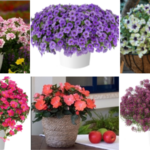



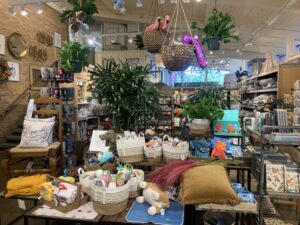
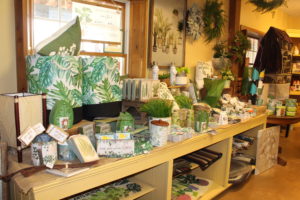
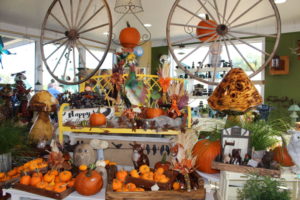


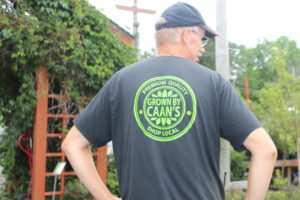
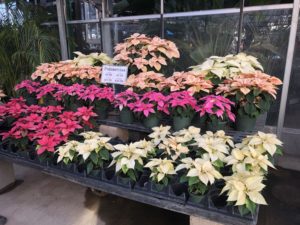
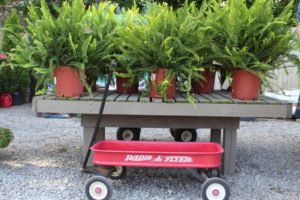
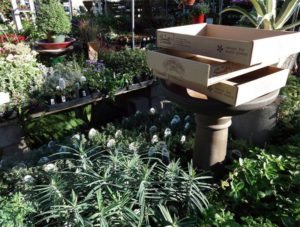
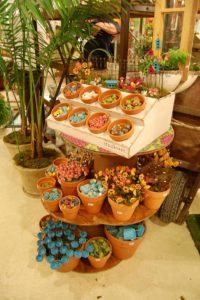

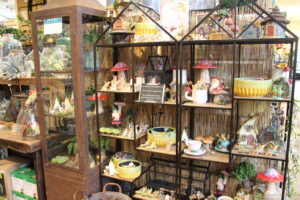
 Videos
Videos





